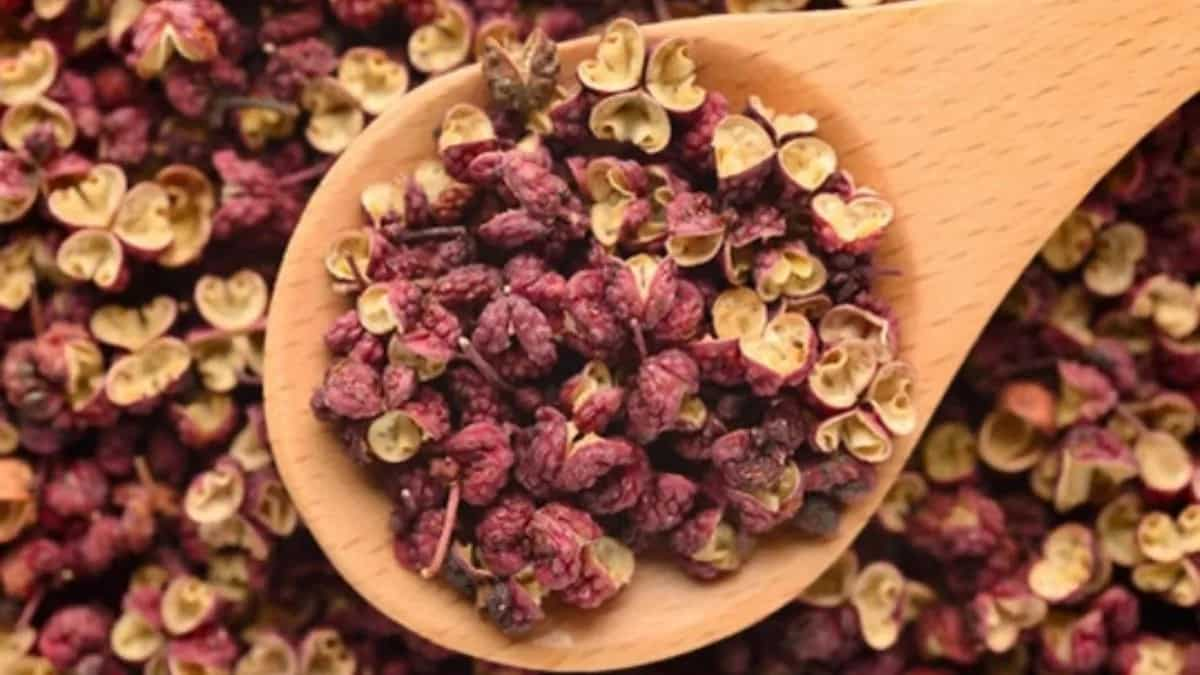
In Goa’s older coastal homes, tirphal once occupied the same space in the spice cabinet as cumin or mustard. It was never used in excess, because its aroma could easily dominate a dish, but when added in the right measure, it brought a unique balance of flavour that no other spice could create. The spice, which grows naturally along the Konkan belt, was often gathered by hand and dried before being stored for the year. With time and changing tastes, many Goans replaced it with more familiar ingredients like black pepper or green chillies. Yet in certain regions, especially around Karwar and Canacona, the tradition of using tirphal continues quietly in homely curries and pickles.
A Spice With Many Names
Tirphal belongs to the same botanical family as Sichuan pepper and shares some of its sensory qualities. It is known by different names across the western coastline of India, tirphal or teppal in Goa and Karnataka, and timur in parts of Maharashtra. The small, round berries grow on wild shrubs that thrive in humid, coastal soil. When dried, the outer husk of the fruit is used for cooking, while the black seed inside is discarded. The flavour is not exactly spicy but leaves a tingling feeling on the tongue, followed by a soft citrus aftertaste. This sensory quality makes it a distinctive spice in seafood and coconut-based dishes that define Goa’s food traditions.
Role In Goan Seafood Curries
In the kitchens of North and South Goa, tirphal is used differently depending on the dish and the region. In North Goa, it often appears in rich coconut curries made with mackerel or sardines. The spice is lightly crushed and soaked in water before being added to the curry, allowing its aromatic oils to infuse slowly into the gravy. In South Goa, especially near Canacona, it finds its place in dry masalas for prawn or crab dishes. It works best with oily or fatty fish, balancing the natural flavours with a faint bitterness and a citrus lift. Some households also add a few tirphal berries to fish ambotik, a tangy red curry made with tamarind and Kashmiri chillies, which gains a rounded, fragrant finish from the spice.
Also read: Rakshabandhan 2025 With Ankita & Adith Fernandes: Fresh Catch Memories & A Karwari Legacy
Presence Beyond Goa’s Borders
Although Goa is often associated with tirphal, the spice is also used in coastal Karnataka and the Konkan region of Maharashtra. In Karwar, for instance, tirphal is added to a dish called sungta humman, a prawn curry that uses ground coconut and red chillies. The same spice appears in a peppery gravy in Malvani homes further north. Across these regions, the use of tirphal is guided by instinct rather than strict measurement. Cooks often judge the right quantity by aroma, adding a few berries to boiling gravies and tasting the balance before serving. These small traditions link the coastal kitchens of Goa, Karnataka, and Maharashtra in a shared understanding of local flavour.
Medicinal And Traditional Uses
In older Goan households, tirphal was not limited to food. It was also valued for its medicinal properties. Local practitioners once used it to ease digestion and treat mild stomach ailments. The tingling effect on the tongue was believed to help stimulate appetite, which is why the spice appeared in pickles and spice pastes during the monsoon, a time when fresh produce was limited and meals tended to be heavier. Villagers would often collect tirphal berries during the rains, sun-dry them, and store them for later use. Even today, some households maintain the habit of drying and storing the spice, though it has become less common in urban areas.
Preserving A Coastal Tradition
While tirphal has gradually disappeared from everyday cooking in Goa, there is a slow return of interest in regional spices among younger chefs and food researchers. Restaurants that focus on traditional Goan cuisine have started reintroducing tirphal in their curries and sauces, often using locally sourced produce. Some culinary workshops in Panjim and Margao now include sessions on identifying native spices, where tirphal is discussed alongside kokum and tamarind. This renewed attention reflects a growing respect for the subtlety of Goa’s coastal heritage.
For those who wish to cook with tirphal at home, a few basic rules apply. The spice should never be ground or roasted directly. Crushing the outer shell lightly and soaking it in warm water releases its oils without overpowering the dish. It combines well with coconut, tamarind, and red chillies, which are the foundation of most Goan gravies. When used carefully, it can transform a simple fish curry into a deeply aromatic meal that captures the essence of coastal Goan cooking.